|
 Flammulina velutipes Flammulina velutipes
SynonymsCollybia velutipes
Flammulina velutipes
Agaricus velutipes
BiostatusOccurrence uncertain
Images (click to enlarge)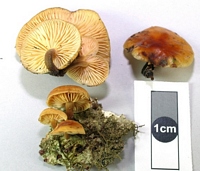
Owner: J.A. Cooper | 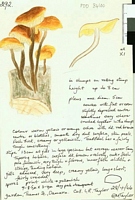
Caption: Watercolour
Owner: G.M. Taylor | 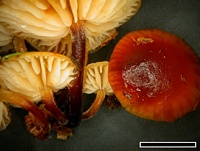
Caption: scale=5mm
Owner: J.A. Cooper | 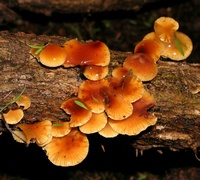
Owner: J.A. Cooper | 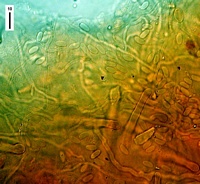
Caption: spores, pilocystidia and oleiiferous cap hyphae
Owner: J.A. Cooper | 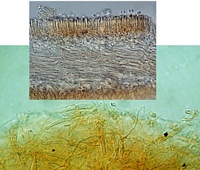
Caption: upper, gill trama. Lower pileus.
Owner: J.A. Cooper | 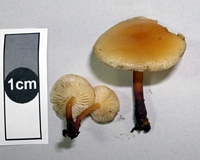
Owner: J.A. Cooper | 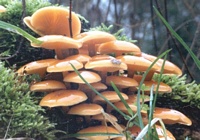
Owner: J.A. Cooper | 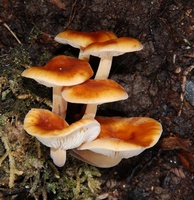
Owner: J.A. Cooper | 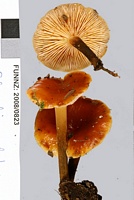
Owner: J.A. Cooper | 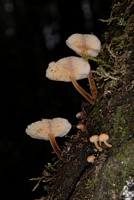
Owner: J.A. Cooper |
Article: Massee, G.E. (1899) [1898]. The fungus flora of New Zealand. Transactions and Proceedings of the New Zealand Institute 31: 282–349 Wellington:.
Description: Pileus convex, then expanding until almost plane, sometimes with an indication of an umbo,
smooth, even, very viscid, bright-yellow, disc tawny, or sometimes altogether yellowish-brown, 3-8 cm. across; flesh thickish
at the disc, becoming very thin towards the margin,
tinged yellow; gills adnexed, rather distant, ventricose, cut out behind, 4-6 mm. broad, pale
opaque-yellow, margin entire; spores elliptical, 7 x 3-3.5 µ; stem 5-10 cm. long, 6-8 mm.
thick, almost equal, narrowed below into a rooting base, apex yellowish, then orange-brown,
becoming darker downwards, minutely velvety, stuffed.
Habitat: On trunks, logs, &c.
Distribution: Dannevirke, New Zealand. Australia, Europe, Siberia, United States.
Notes: Readily distinguished by the bright-yellow viscid pileus and the dark minutely velvety stem.
Tufted. One of the few species of the Agaricini capable of growing in very cold weather, and
in Britain may often be seen quite vigorous after having experienced 6° of frost for several
nights in succession.
Article: Horak, E. (1971). A contribution towards the revision of the Agaricales (Fungi) from New Zealand. New Zealand Journal of Botany 9(3): 403-462 (http://www.rsnz.org/publish/abstracts.php).
Notes: Most mycologists would identify this material (COLENSO b 968) as conspecific
with the true F. velutipes which grows throughout the northern hemisphere. From
our observations we hesitate to consider F. velutipes as an introduced fungus in
New Zealand and regard the New Zealand form as a distinct variety.
Article: Stevenson, G. (1964). The Agaricales of New Zealand: V. Kew Bulletin 19(1): 1-59.
Notes:
This common saprophyte, which is also occasionally a mild parasite, occurs fairly commonly on both exotic and indigenous fallen or standing timber. On Pinus pilei are often dwarfed, though they occur in dense clusters. (Lange (1936)).
|